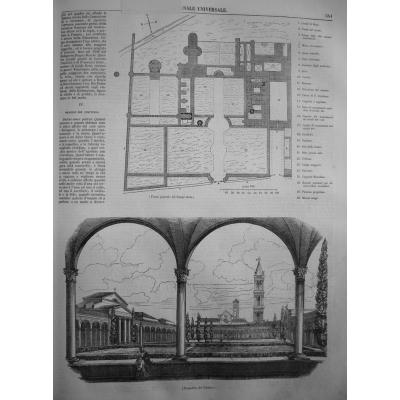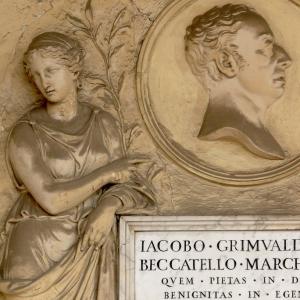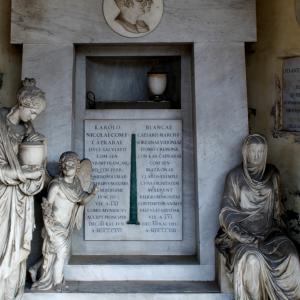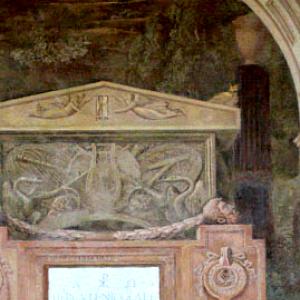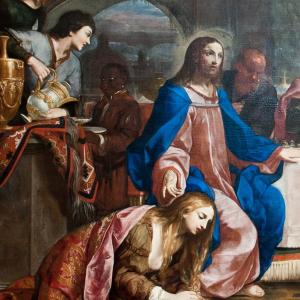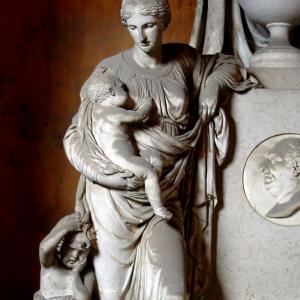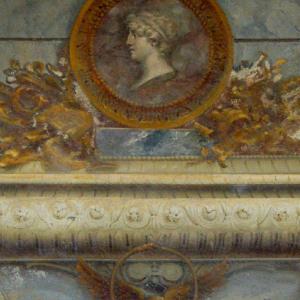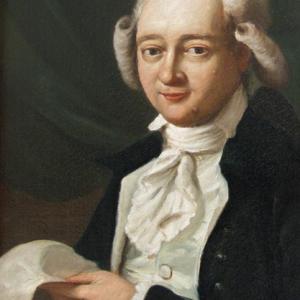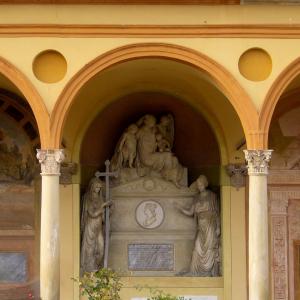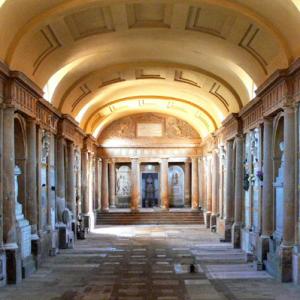Schede
In 1804, three years after the cemetery’s inauguration, Francesco Tognetti writes a book entitled “Speech given in the Certosa church on the anniversary of the Cemetery Institution" (Discorso recitato nella chiesa della Certosa il giorno anniversario della Istituzione del Cimiterio). He explains to the inhabitants of Bologna the importance of the cemetery for the history of the city and for the country. His speech shows how important the graveyard is for the inhabitants’ memory, however he emphasises most of all the great contribution of printed publications, which were written in order to remind the inhabitants of Bologna what the tombstones do not say.
Not only has Certosa been the artistic centre of the city for more than a century, but also a reference point beyond its own territory and a source of inspiration for famous or unknown writers. It has also been a source of civic and sentimental memories thanks to the ancient monuments and tombstones saved from revolutions. Therefore this cemetery has become an imaginary setting for impossible love like in the romantic novel “Clelia, ossia Bologna nel 1833”. Poems, odes, stories, anecdotes written by Lord Byron, Charles Dickens, Stendhal, Giosue Carducci, Giovanni Pascoli symbolise the importance given to the collective memory which nowadays is not considered as essential as it was in the past. This concept is found in the famous collection of engravings by Antonio Basoli entitled “Pictorial Alphabet” in 1832. Letter C shows the Certosini Cemetery and in the background there is a cloister which is very similar to that of the “Suffragi alla Certosa”, now Third Cloister. Thus publishing news concerning the building of funeral monuments was common for newspapers throughout the nineteenth and the first part of the twentieth century. For decades Certosa was the only modern monumental cemetery in Italy dedicated to collective history and to modern art.
This peculiarity is shown in the article written by Giuseppe Sacchi and published in the Milanese "Cosmorama Pittorico" magazine. In the literary work its monumental aspect is exalted: wide porches, atriums, chapels, flowering meadows. This place is a sort of museum because there are many ancient gravestones saved from destroyed churches, such as the one dedicated to the Gavazzi Lussari Family and realised by the Florentine sculptor Francesco di Simone and the tomb of Pope Alexander V carved by Nicolò Aretino in 1410. The Bolognese artists mentioned by Giuseppe Sacchi show how famous architect Angelo Venturoli, painters Pelagio Palagi and Filippo Pedrini and sculptor Giacomo de Maria were. At the end of the article the custodian, Sibaud, is described while showing a skull to the visitor as he had done with Lord Byron. However this time it isn’t his best friend’s but the famous painter Guido Reni’s. Certosa is mentioned in many books both to commemorate deceased citizens and for its ancient sepulchres. For example, the literary work named ‘Archivio patrio di antiche e moderne rimembranze felsinee’ (1855 - 59) contains the description of the grave of Ercole Bottrigari who died at eighty years old. This monument was located in San Francesco Church and then it was moved to this cemetery during the Napoleonic period. Many monastic cells are now rooms belonging to the Museum and have been renamed according to the historical period of all the art works contained. Today only the XV century Cloister is left, called Delle Madonne o dell’Ossaia, where some bas relief frescoes of Virgin Mary are displayed. The other art works have either been brought back to their previous locations or are exhibited at the Medieval Civic Museum or at the Municipal Art Collections. Many cemetery guides have been written since 1813 and the most important one was written by Angelo Raule in 1961. From 1998 many essays and publications were written until 2016, when the New Guide was published by Minerva Edizioni. Another book concerning Certosa is the ‘White and Green Charterhouse’ (Certosa Bianca e verde) published in 1967 by Alessandro Cervellati who dedicated it to his deceased wife.
Traduzione a cura di Luisa Adamson, Ludovica Bagnoli, Sara Biagi and Maria Elena Torresani; classe 3H, nell'ambito del progetto di Alternanza scuola-lavoro 2018/19 con il Liceo Ginnasio Luigi Galvani di Bologna.


